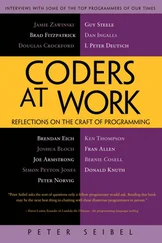Peter Siebel - Practical Common Lisp
Здесь есть возможность читать онлайн «Peter Siebel - Practical Common Lisp» весь текст электронной книги совершенно бесплатно (целиком полную версию без сокращений). В некоторых случаях можно слушать аудио, скачать через торрент в формате fb2 и присутствует краткое содержание. Год выпуска: 2005, ISBN: 2005, Издательство: Apress, Жанр: Программирование, на английском языке. Описание произведения, (предисловие) а так же отзывы посетителей доступны на портале библиотеки ЛибКат.
- Название:Practical Common Lisp
- Автор:
- Издательство:Apress
- Жанр:
- Год:2005
- ISBN:1-59059-239-5
- Рейтинг книги:4 / 5. Голосов: 1
-
Избранное:Добавить в избранное
- Отзывы:
-
Ваша оценка:
- 80
- 1
- 2
- 3
- 4
- 5
Practical Common Lisp: краткое содержание, описание и аннотация
Предлагаем к чтению аннотацию, описание, краткое содержание или предисловие (зависит от того, что написал сам автор книги «Practical Common Lisp»). Если вы не нашли необходимую информацию о книге — напишите в комментариях, мы постараемся отыскать её.
Practical Common Lisp — читать онлайн бесплатно полную книгу (весь текст) целиком
Ниже представлен текст книги, разбитый по страницам. Система сохранения места последней прочитанной страницы, позволяет с удобством читать онлайн бесплатно книгу «Practical Common Lisp», без необходимости каждый раз заново искать на чём Вы остановились. Поставьте закладку, и сможете в любой момент перейти на страницу, на которой закончили чтение.
Интервал:
Закладка:
150
When a &whole parameter is used in a macro parameter list, the form it's bound to is the whole macro form, including the name of the macro.
151
Note, however, that while the Lisp reader knows how to skip comments, it completely skips them. Thus, if you use READ to read in a configuration file containing comments and then use PRINT to save changes to the data, you'll lose the comments.
152
By default OPEN uses the default character encoding for the operating system, but it also accepts a keyword parameter, :external-format, that can pass implementation-defined values that specify a different encoding. Character streams also translate the platform-specific end-of-line sequence to the single character #\Newline.
153
The type (unsigned-byte 8)indicates an 8-bit byte; Common Lisp "byte" types aren't a fixed size since Lisp has run at various times on architectures with byte sizes from 6 to 9 bits, to say nothing of the PDP-10, which had individually addressable variable-length bit fields of 1 to 36 bits.
154
In general, a stream is either a character stream or a binary stream, so you can't mix calls to READ-BYTE and READ-CHAR or other character-based read functions. However, some implementations, such as Allegro, support so-called bivalent streams, which support both character and binary I/O.
155
Some folks expect this wouldn't be a problem in a garbage-collected language such as Lisp. It is the case in most Lisp implementations that a stream that becomes garbage will automatically be closed. However, this isn't something to rely on—the problem is that garbage collectors usually run only when memory is low; they don't know about other scarce resources such as file handles. If there's plenty of memory available, it's easy to run out of file handles long before the garbage collector runs.
156
Another reason the pathname system is considered somewhat baroque is because of the inclusion of logical pathnames . However, you can use the rest of the pathname system perfectly well without knowing anything more about logical pathnames than that you can safely ignore them. Briefly, logical pathnames allow Common Lisp programs to contain references to pathnames without naming specific files. Logical pathnames could then be mapped to specific locations in an actual file system when the program was installed by defining a "logical pathname translation" that translates logical pathnames matching certain wildcards to pathnames representing files in the file system, so-called physical pathnames. They have their uses in certain situations, but you can get pretty far without worrying about them.
157
Many Unix-based implementations treat filenames whose last element starts with a dot and don't contain any other dots specially, putting the whole element, with the dot, in the name component and leaving the type component NIL .
(pathname-name (pathname "/foo/.emacs")) ==> ".emacs"
(pathname-type (pathname "/foo/.emacs")) ==> NIL
However, not all implementations follow this convention; some will create a pathname with "" as the name and emacsas the type.
158
The name returned by FILE-NAMESTRING also includes the version component on file systems that use it.
159
he host component may not default to NIL , but if not, it will be an opaque implementation-defined value.
160
For absolutely maximum portability, you should really write this:
(make-pathname :type "html" :version :newest :defaults input-file)
Without the :versionargument, on a file system with built-in versioning, the output pathname would inherit its version number from the input file which isn't likely to be right—if the input file has been saved many times it will have a much higher version number than the generated HTML file. On implementations without file versioning, the :versionargument should be ignored. It's up to you if you care that much about portability.
161
See Chapter 19 for more on handling errors.
162
For applications that need access to other file attributes on a particular operating system or file system, libraries provide bindings to underlying C system calls. The Osicat library at http://common-lisp.net/project/osicat/provides a simple API built using the Universal Foreign Function Interface (UFFI), which should run on most Common Lisps that run on a POSIX operating system.
163
The number of bytes and characters in a file can differ even if you're not using a multibyte character encoding. Because character streams also translate platform-specific line endings to a single #\Newlinecharacter, on Windows (which uses CRLF as its line ending) the number of characters will typically be smaller than the number of bytes. If you really have to know the number of characters in a file, you have to bite the bullet and write something like this:
(with-open-file (in filename)
(loop while (read-char in nil) count t))
or maybe something more efficient like this:
(with-open-file (in filename)
(let ((scratch (make-string 4096)))
(loop for read = (read-sequence scratch in)
while (plusp read) sum read)))
164
MAKE-BROADCAST-STREAM can make a data black hole by calling it with no arguments.
165
The biggest missing piece in Common Lisp's standard I/O facilities is a way for users to define new stream classes. There are, however, two de facto standards for user-defined streams. During the Common Lisp standardization, David Gray of Texas Instruments wrote a draft proposal for an API to allow users to define new stream classes. Unfortunately, there wasn't time to work out all the issues raised by his draft to include it in the language standard. However, many implementations support some form of so-called Gray Streams, basing their API on Gray's draft proposal. Another, newer API, called Simple Streams, has been developed by Franz and included in Allegro Common Lisp. It was designed to improve the performance of user-defined streams relative to Gray Streams and has been adopted by some of the open-source Common Lisp implementations.
166
One slightly annoying consequence of the way read-time conditionalization works is that there's no easy way to write a fall-through case. For example, if you add support for another implementation to fooby adding another expression guarded with #+, you need to remember to also add the same feature to the orfeature expression after the #-or the ERROR form will be evaluated after your new code runs.
167
Another special value, :wild-inferiors, can appear as part of the directory component of a wild pathname, but you won't need it in this chapter.
168
Implementations are allowed to return :unspecificinstead of NIL as the value of pathname components in certain situations such as when the component isn't used by that implementation.
Интервал:
Закладка:
Похожие книги на «Practical Common Lisp»
Представляем Вашему вниманию похожие книги на «Practical Common Lisp» списком для выбора. Мы отобрали схожую по названию и смыслу литературу в надежде предоставить читателям больше вариантов отыскать новые, интересные, ещё непрочитанные произведения.
Обсуждение, отзывы о книге «Practical Common Lisp» и просто собственные мнения читателей. Оставьте ваши комментарии, напишите, что Вы думаете о произведении, его смысле или главных героях. Укажите что конкретно понравилось, а что нет, и почему Вы так считаете.








